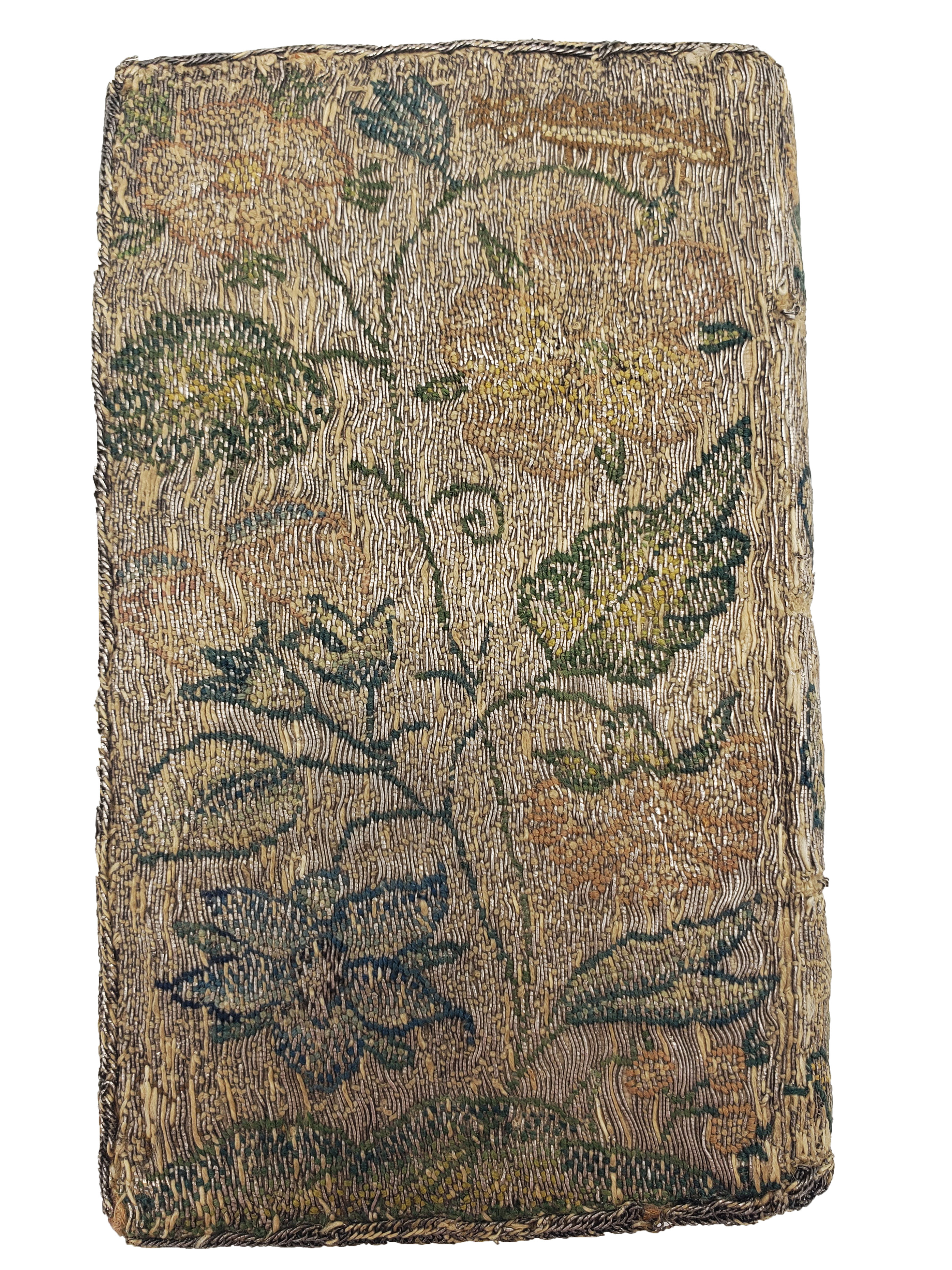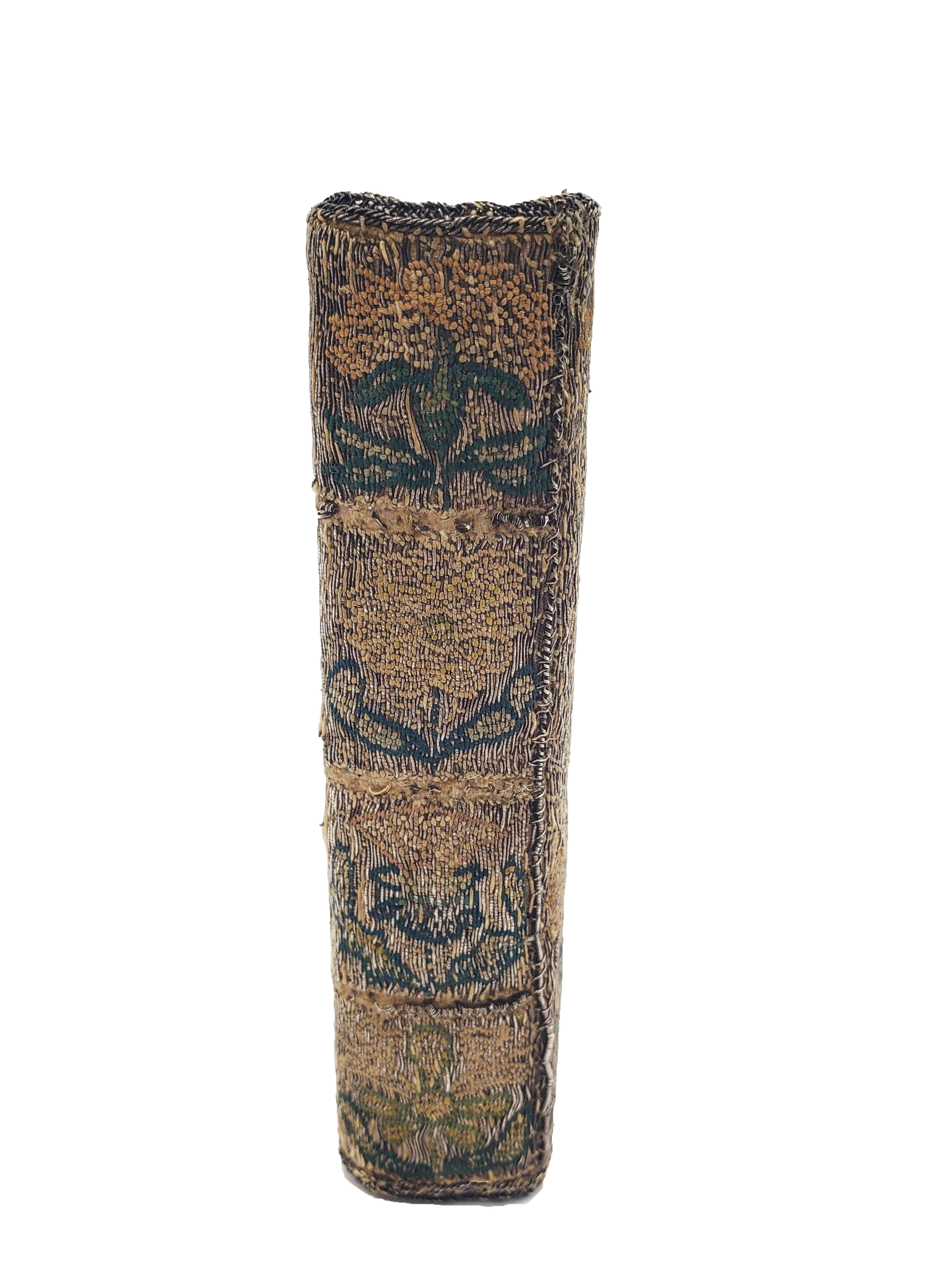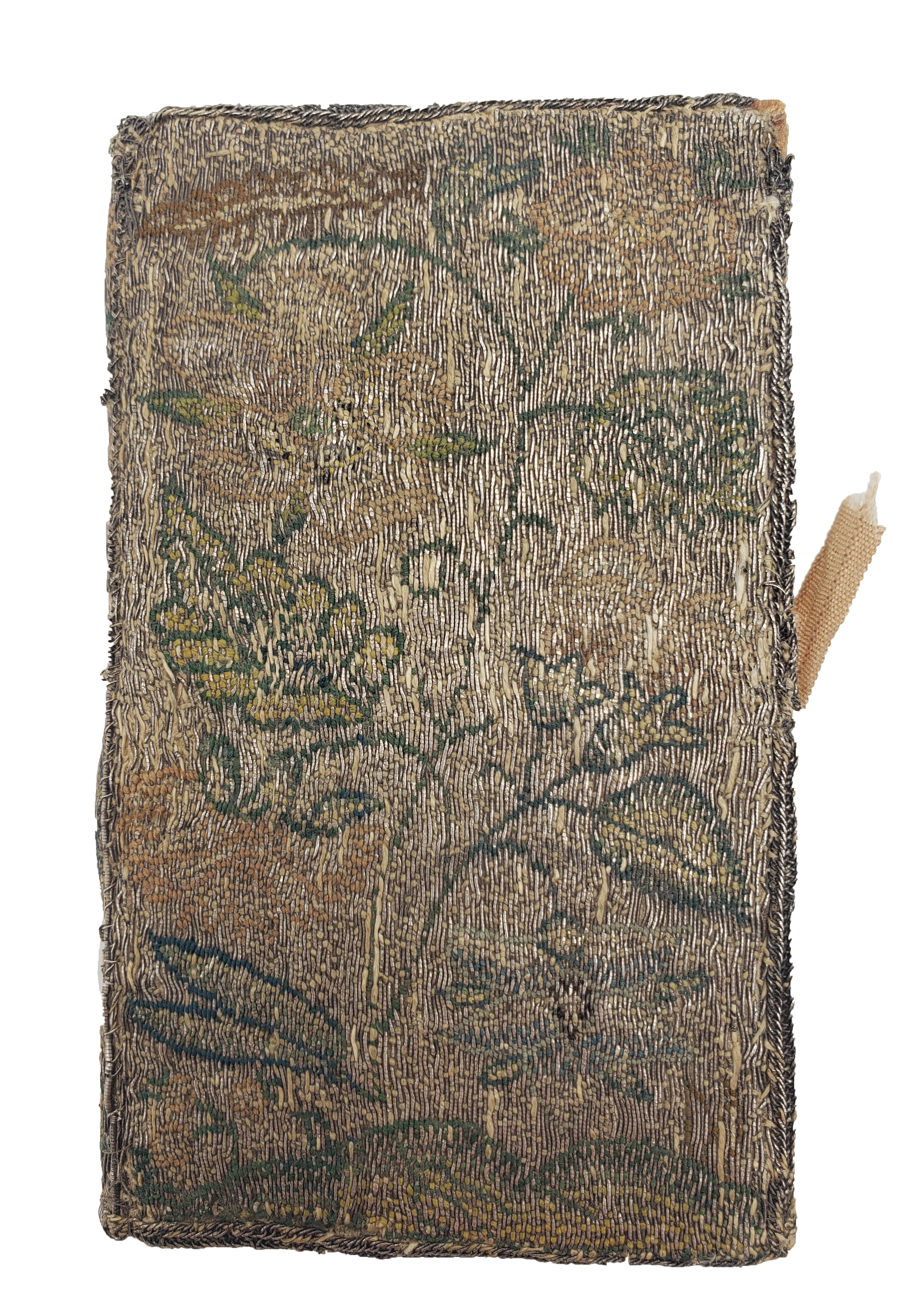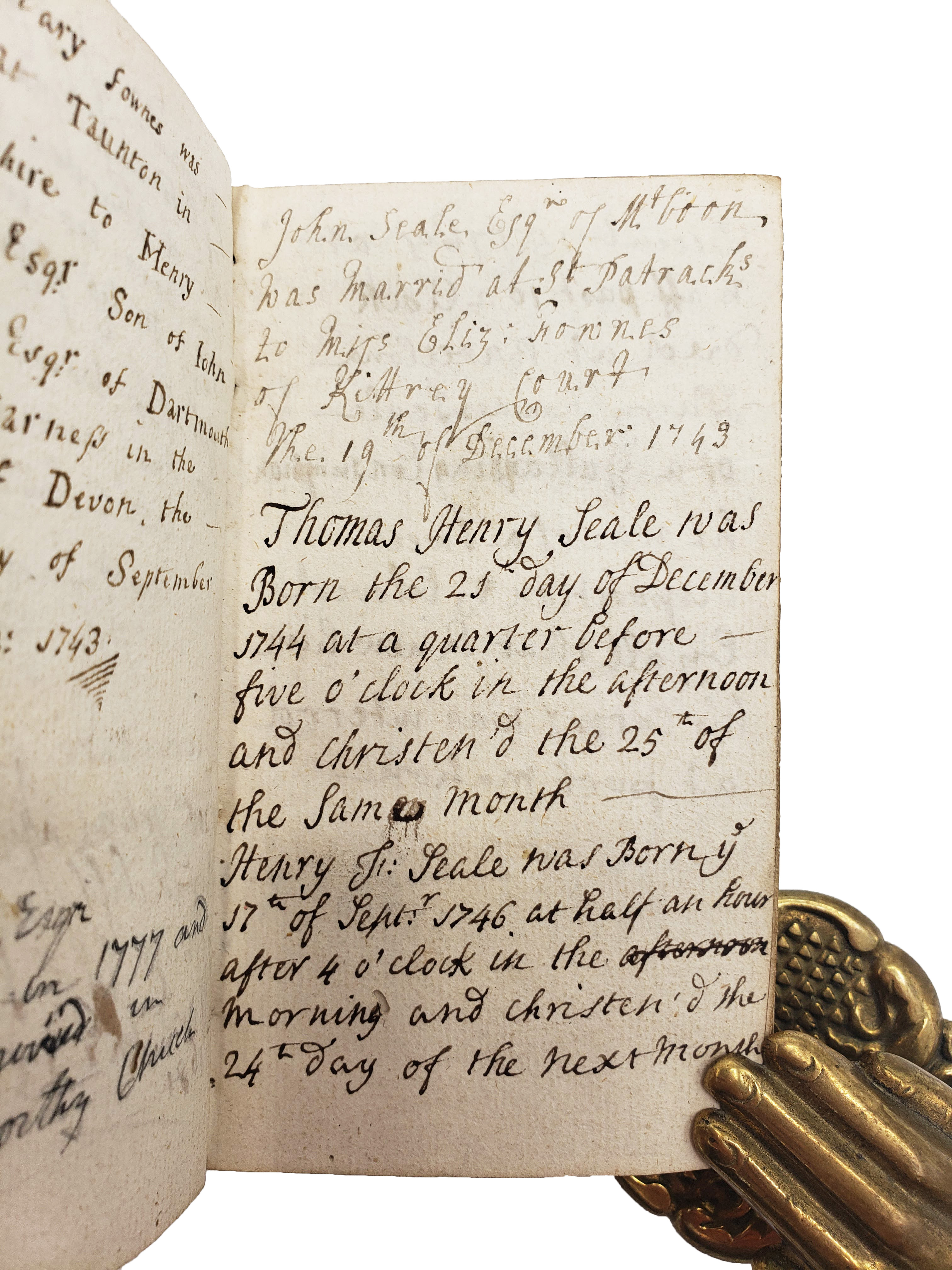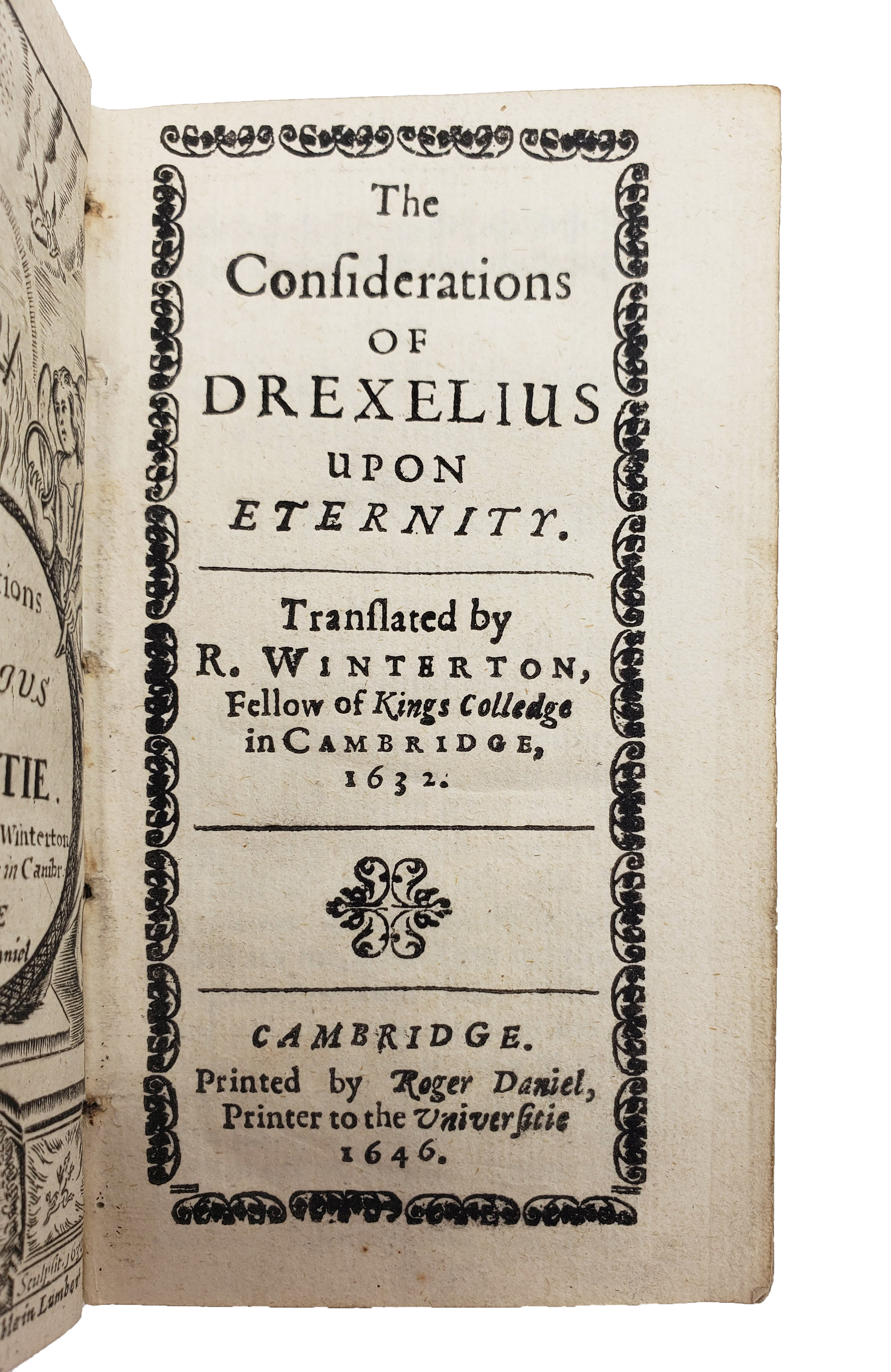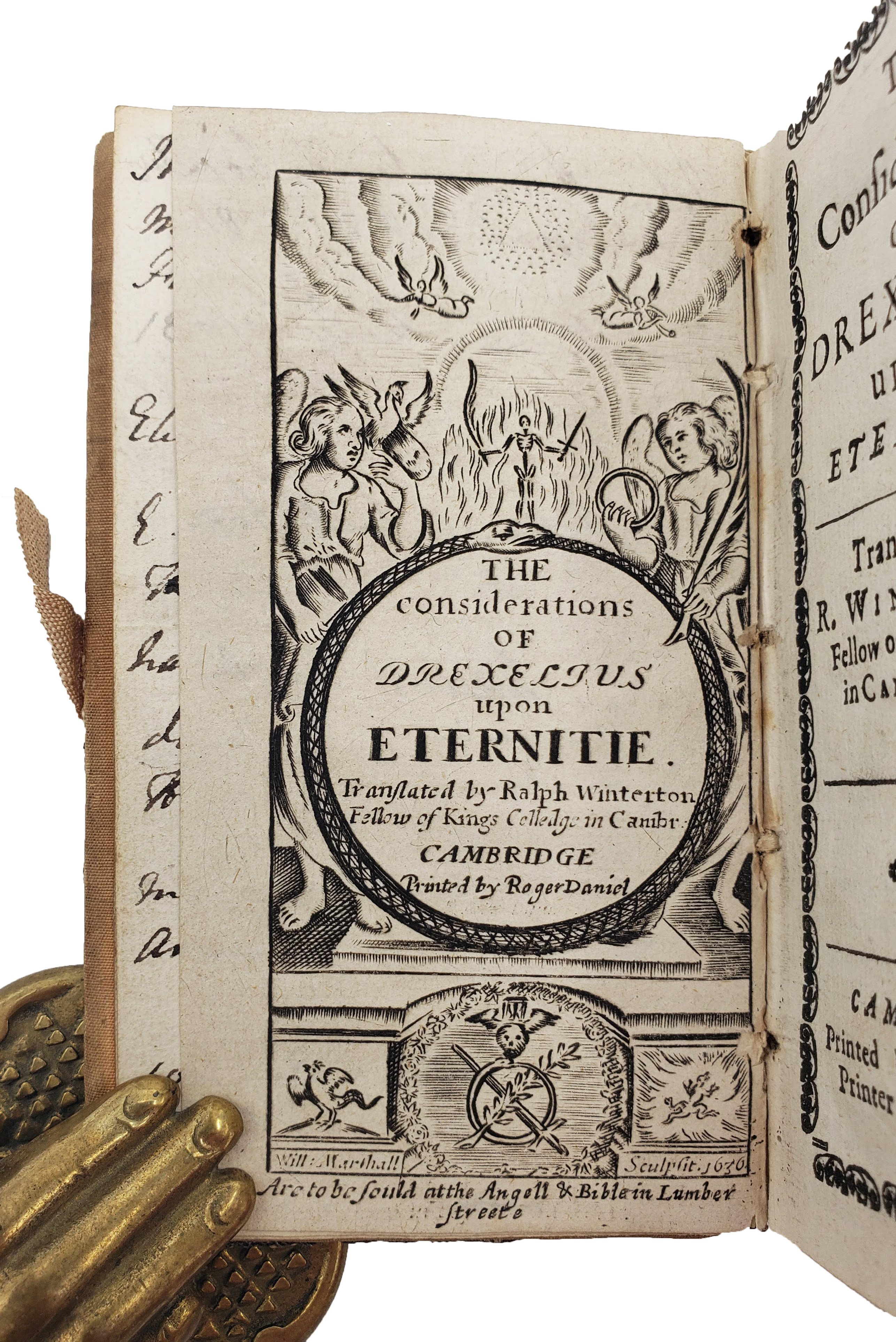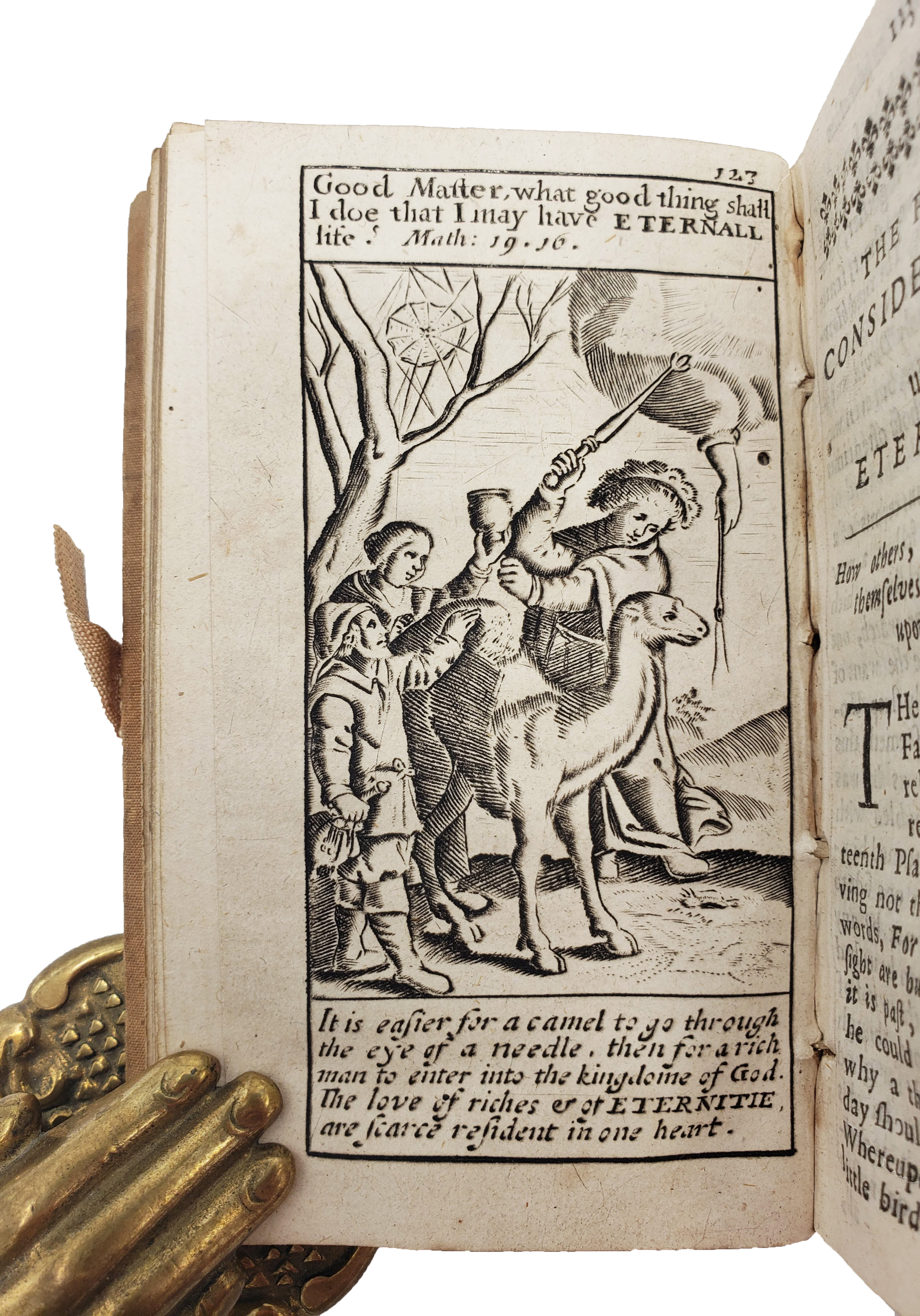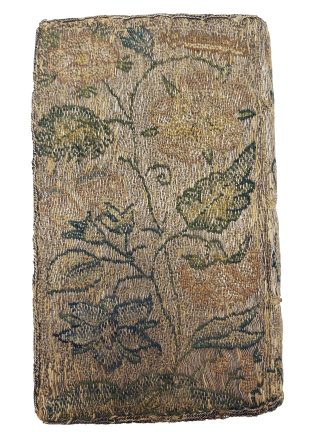DREXEL, Jeremias.
STRIKING SILVER THREAD
The consideration of Drexelius upon eternity...
Cambridge, Roger Daniel, printer to the universitie, 1646.£13,500.00
12mo. pp. [32] 358 [12]. Roman and italic letter. Engraved frontispiece by William Marshall of death holding a feather and sword, flanked by two angels and title encircled by a basilisk, 7 ekphrastic plates of biblical scenes with proverbs about eternity, ornaments and floriate initials throughout. Mss. by several hands to flyleaves, recording history of the Seale family between 1658 and 1807. Light age yellowing, upper margin trimmed. A handsome, clean copy in a striking contemporary embroidered floral binding of silver, and coloured thread, framed by a silver wire braid (once brilliant), a little loose at corners, pastedowns in rose watered silk, a.e.g. In folding box.
A beautifully bound English translation of this fascinating text by Drexel, a Jesuit writer who served as court preacher to Maximillian I. In his writings, he was fond of visual aids to ease his teachings, and as a result, many of his works are illustrated. The translator, Ralph Winterton (1600-1636), worked principally as a physician, and was awarded the position of Regius Professor of Physic at Cambridge in 1635. He published several editions of classical works and translated the Considerations in 1632, following the death of his brother in the previous year. The text was Drexler’s earliest work, published in 1620, and considers religious attitudes and representations of eternity, with reference to writers such as Simonides, Boetius, Plato, Augustine and St Paul. The author pays particular attention to both ancient and Christian philosophies. The accompanying engravings were executed by William Marhsall (fl.1617-49), who is best known for his allegorical portraits of Charles I as a Christian martyr, and William Shakespeare, which was included in John Benson’s edition of the Sonnets.
The binding comprises a strikingly reflective silver ground, with a thin green winding stem rising out of small bed of grass, growing blue and pink flowers. Each of these is filled in with a tapestry stitch to create blocks of colour and outlines are rendered using a darker thread of the same colour. The spine is divided into four compartments, each with a different type of pink flower: a carnation, rose, tulip and pansy. This book appears to have been kept within a single family for at least 150 years, with the names, births, marriages and deaths of the Seales, in chronological order, between 1658 and 1807, on the blank front and endpapers. It was common practice for books, particularly Bibles, to be passed down through generations of a family, with biographical details recorded in this same way, and his book was clearly similarly prized.
ESTC: R28595; USTC: 3045936; Lowndes II: 672.

